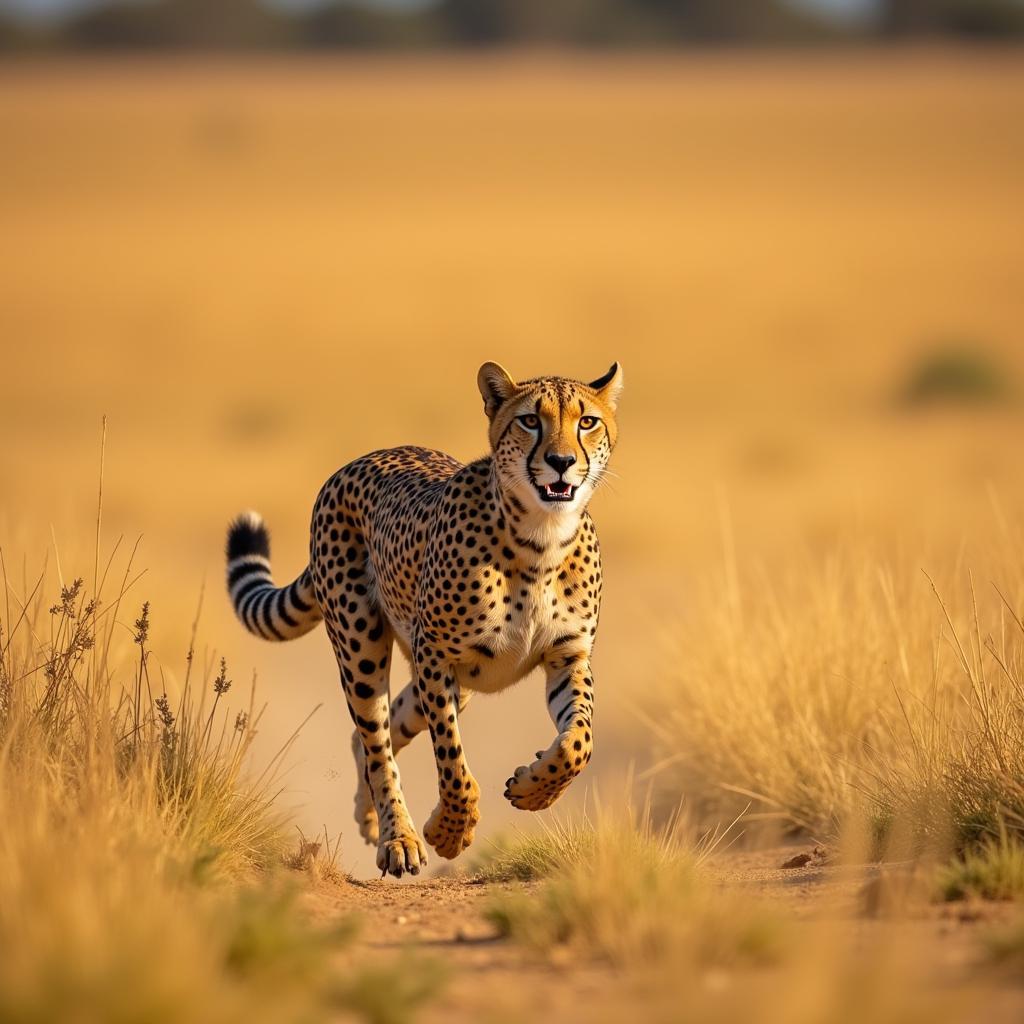Unveiling the Mysteries of the African Cobra Snake
The African Cobra Snake, a name that evokes both fear and fascination, represents a group of highly venomous snakes inhabiting diverse regions across the African continent. These remarkable reptiles have captured human imagination for centuries, playing significant roles in mythology, folklore, and traditional medicine. This article delves into the captivating world of African cobras, exploring their behavior, habitat, venom, and the crucial role they play in the African ecosystem.
Decoding the African Cobra: Species and Characteristics
African cobras belong to the genus Naja, encompassing several distinct species. From the Egyptian cobra, famed for its historical significance, to the forest cobra, known for its impressive size and agility, each species exhibits unique characteristics and adaptations. Generally, African cobras are characterized by their ability to spread a “hood” by flattening their neck ribs, a dramatic display often used as a warning signal to potential predators. Their coloration varies greatly, ranging from jet black to vibrant shades of brown, yellow, and even red.
After the initial introduction, it’s important to dive into the specifics of the different cobra species. The african cobra wiki can provide a comprehensive overview.
Habitat and Distribution: Where Do African Cobras Live?
African cobras occupy a wide range of habitats, from savannas and grasslands to forests and semi-desert regions. Their distribution spans across sub-Saharan Africa, with each species exhibiting specific habitat preferences. Some species, like the spitting cobra, thrive in drier environments, while others, like the forest cobra, prefer the humid conditions of tropical rainforests. Understanding their habitat preferences is crucial for conservation efforts.
Understanding their habitat helps us appreciate the complexities of the African ecosystem. For more information about other snakes found on the continent, check out this resource on african animals snakes.
Venom and Danger: The Potent Bite of the African Cobra
African cobras are renowned for their highly potent venom, a complex cocktail of neurotoxins and cytotoxins. The effects of a cobra bite can vary depending on the species, the amount of venom injected, and the individual’s health. Symptoms can range from localized pain and swelling to paralysis, respiratory failure, and even death if left untreated.
What are the common effects of an African cobra bite? The effects can include localized pain, swelling, difficulty breathing, and in severe cases, paralysis and even death.
The African Cobra in Culture and Mythology
Across Africa, cobras hold a significant place in various cultures and mythologies. They are often viewed as symbols of power, royalty, and even divinity. In some traditions, they are revered as protectors and guardians, while in others, they are feared as bringers of misfortune. Exploring these cultural narratives provides valuable insights into the complex relationship between humans and these fascinating creatures.
If you’re interested in learning more about a specific type of African cobra, you can find detailed information on the african forest cobra.
Conservation Status: Protecting the African Cobra
Several African cobra species face increasing threats due to habitat loss, human-wildlife conflict, and the illegal pet trade. Understanding these challenges is crucial for developing effective conservation strategies to protect these vital components of the African ecosystem. Learn more about the African cobra at african cobra. You might also find the african cobra crossword a fun and engaging way to test your knowledge.
Conclusion: Appreciating the African Cobra Snake
The African cobra snake, with its potent venom and captivating hood display, is a truly remarkable creature. Understanding its biology, behavior, and cultural significance is essential for fostering coexistence and ensuring its continued survival in the wild. The African cobra plays a vital role in the delicate balance of the African ecosystem, and its conservation is crucial for maintaining biodiversity.
FAQ: Frequently Asked Questions about African Cobras
-
What is the most venomous African cobra? The most venomous African cobra is generally considered to be the forest cobra.
-
How do African cobras hunt? African cobras primarily hunt small mammals, amphibians, and other reptiles.
-
Are all African cobras spitting cobras? No, not all African cobras are spitting cobras. Spitting is a defensive mechanism employed by certain species.
-
What should you do if bitten by an African cobra? Seek immediate medical attention.
-
What is the lifespan of an African cobra? African cobras can live for up to 20 years in the wild.
-
How do African cobras reproduce? African cobras are oviparous, meaning they lay eggs.
Common Scenarios and Questions:
Scenario: You encounter an African cobra while hiking.
Question: What should you do?
Answer: Remain calm, avoid sudden movements, and slowly back away. Do not attempt to handle or approach the snake.
Scenario: You find an African cobra in your garden.
Question: Who should you contact?
Answer: Contact your local wildlife authorities or a snake removal service.
Further Exploration:
For more information on African wildlife, consider exploring other resources on our website about venomous snakes, conservation efforts in Africa, and the diverse ecosystems of the continent.
Need Help?
For any assistance or inquiries, please contact us: Phone: +255768904061, Email: kaka.mag@gmail.com or visit us at: Mbarali DC Mawindi, Kangaga, Tanzania. We have a 24/7 customer service team.

